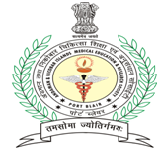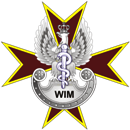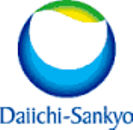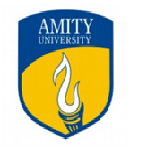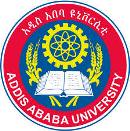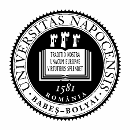Day 3 :
- Concept of Pharmacovigilance and its Significance and Scope
Pharmacovigilance and Risk Management
Clinical Research and Statistics
Session Introduction
Greg Koski
Alliance for Clinical Research Excellence and Safety
USA
Title: Application of systems thinking and systems engineering principles to enhance safety and pharmacovigilance through real-time informatics

Biography:
Greg Koski is internationally recognized as a leader in the realm of systems thinking and technology to improve the clinical research process. He is co-founder and president of the Alliance for Clinical Research Excellence and Safety (ACRES), a global multi-sector non-profit collaborative working in the public interest to build a shared open-system to promote accountable research while enhancing quality, efficiency and safety.
Abstract:
Vigilance is the action or state of keeping careful watch for possible danger or difficulties. Conceptually and operationally, vigilance requires contemporaneous access to critical safety-relevant data or information to enable analysis and assessment of potential risks. Medicinal products provide valuable methods for diagnosis, prevention and treatment of disease, and also carry significant potential for adverse reactions resulting in injury or harm, even death. Several industries, including transportation, aerospace and nuclear power generation, have long-standing and well-developed safety systems based on systems thinking—appreciating that data flowing through critical interactions among diverse systems components generates signals that can reliably be used to effectively monitor the complex environment for indications of impending component or system failures well before a critical incidents occur with potential catastrophic results. Remarkably, the pharmaceutical and medical device industries have as yet failed to develop a comparable capability, instead relying on often out-moded, inefficient processes to support the critical function of pharmacovigilance. Through application of systems engineering principles to the drug development/clinical research process, and with effective application of information technology and informatics, it is possible to realize a system for continuous real-time pharmacovigilance, and potentially, predictive pharmacovigilance, to dramatically enhance drug and device safety. This presentation will describe a vision for such a system and proposals for its realization.
Angela van der Salm
DADA Consultancy
Netherlands
Title: Intentional medication errors: Off-label use?

Biography:
Angela specialises in providing tailor made pharmacovigilance support, including QPPV provision and responsibility for the clients pharmacovigilance systems. Create safety data exchange agreements on behalf of our clients, database management of patient reports on adverse events related to medicinal product use, give training on basic and advanced pharmacovigilance, write periodic reports on the risk-benefit balance of pharmaceutical products by evaluating literature, case reports and all other relevant sources. Monitor the department for quality and compliance. Her research interests lie with Benefit/Risk evaluation and risk management, Off label use and Medication errors.
Abstract:
To obtain a marketing authorisation (MA), companies are expected to evaluate the safe use of their medicinal product. In the risk management plan, dedicated sections address medication errors and off-label use; two sides of the same coin: the authorized product information guidance is not followed, either inadvertently (in error) or intentionally. Several initiatives are currently taking place to monitor medication errors, e.g. to develop a medication error SMQ, and the EMA has published good practice guides on coding and reporting, and on risk minimization and prevention. The balancing line between product usage that categorizes as medication errors versus off-label use is thin, and may be drawn differently by different MAHs, also depending on the authorized indications for their specific products. How often is it clear from the reported information that the “off-label” administration indeed occurred intentionally? How to code reports where a patient intentionally takes a product for longer than is written in the product information? Also, the same active substance, usually the level on which signal detection activities occur, can be authorised for multiple indications. This means that if signalling activities occur by different stakeholders, different results will be obtained. Finally, where the concept of medication errors includes an unintended error or failure in the drug treatment process, the concept of off-label refers to an intention to not use the product according to the authorised indication. How should this be managed?
Peter Lannon
Lanpharm Consulting T/A Lanpharm Services Limited
UK
Title: The risk management plan and the fi rst marketing authorization application: A practical approach

Biography:
Peter Lannon has graduated from Rhodes University in 1995 with a Bachelor of Pharmacy degree. He is a Registered Pharmacist and holds a Postgraduate Certifi cate in Pharmacovigilance and Pharmacoepidemiology from the London School of Hygiene and Tropical Medicine. He is the Director of Lanpharm Consulting, a pharmacovigilance consulting company providing advice/consulting on all areas of pharmacovigilance. He has over 17 years experience in pharmacovigilance in both small and large pharmaceutical and generic companies.
Abstract:
Submission of a new Marketing Authorization Application (MAA) requires a great deal of work and planning over many years. Much input and planning into the quality, efficacy, pre-clinical and clinical safety and numerous other areas is undertaken, however the role of the risk management plan (RMP), its production, submission and approval is oft en underestimated. It is vitally important that a clear strategy is agreed and communicated early in the development process or as soon intent to submit MAA has been taken. Although the RMP contains little new/novel data that is not present elsewhere in the submission package, the inter-relationship between the RMP and other higher level documents such as the Summary of Clinical Safety, the Clinical Overview, Pre-clinical Overview and the proposed label needs to be carefully considered. The timing of the development, production and approval of the RMP is vital as it is difficult or risky to finalize until these other high level documents have been approved for submission. The aim of this presentation is to provide some experience of a somewhat unorthodox first MAA for a new drug entity including lessons learned and to provide some practical suggestions/advice to aid a smoother regulatory submission.
Kieran O’Donnell
TMC Pharma Services Ltd
UK
Title: Role of pharma industries in the improvement of pharmacovigilance system

Biography:
Kieran O’Donnell has over 15 years of PV and since 2006 has been leading European and Global PV operations, gaining broad experience in PV QMS; Benefit-risk management; Signal Detection & Management; PSURs & DSURs; RSI development; ICSR and SUSAR submission; Inspection (MHRA GCP & PV and FDA PV inspections; ISO 9001:2000; and responsible roles such as the RP for EudraVigilance and Deputy QPPV for Pharmacovigilance. In addition to his PgC Pharmacovigilance, he has been a member of the RQA PV Committee since 2008 and is a Fellow of PIPA. He joined TMC in June 2014.
Abstract:
The public reputation of the pharma industry has been impacted by the many examples where PV systems have failed and companies have promoted unsafe indications and dosages of approved medicines, resulting in patient deaths and severe events. However, there are some examples where tragedies and failures such as thalidomide and the lack of a structured AE reporting system eventually result in some positive outcomes e.g. approved indications for thalidomide in leprosy and cancer- all managed under the umbrella of a comprehensive risk management system. Many drugs are launched and then prescribed and/or used outside of their authorized indication, and there remain significant challenges in controlling or influencing prescriber and patient behaviour to support safe use of the product. With the introduction of the FDAAA, PDUFA, and GVP, the pharma industry has seen seismic changes to PV requirements that focus on patient protection, proactive PV, and the need for PV quality systems. But does this mitigate the possibility for pharma company ineptitude and/ or malpractice, and what should be done and what can be done by pharma to improve PV? Compliance is the minimum standard, not the gold standard. This presentation will look at some examples where the challenges of PV facing the pharma company can be proactively managed towards obtaining the right data, allow the right decisions to be made, and take the necessary actions toward safeguarding the patient.

Biography:
Alistair Coates is the UK Business Advisor for Oviya MedSafe. Current clients range from start-up companies to established pharmaceutical companies in Europe, the US and the rest of the world. He offers an independent, expert, consultancy services to the pharmaceutical, medical devices and biotechnology industries for Clinical Drug Safety and Pharmacovigilance. His career within the pharmaceutical industry spans over two decades, where he has been involved with pre-clinical pharmacology, pre-marketing Clinical Drug Safety and Clinical Data Management, post-marketing Pharmacovigilance and medical device vigilance. He holds a degree in pharmacology and he has a subsequent qualification in Pharmacovigilance.
Abstract:
EudraVigilance is a data processing network and management system for reporting and evaluating suspected ADRs during the development and following the marketing authorisation of medicinal products in the EEA. EudraVigilance is also one of the main pillars of the European Risk Management Strategy, which strengthens the conduct of pharmacovigilance in the EEA. It facilitates the process of risk management at several levels including aspects of risk detection, risk assessment, risk minimisation and risk communication. Consequently, EudraVigilance contributes to the protection and promotion of public health in the EEA. Furthermore, it provides a powerful tool for the safety monitoring of medicinal products and in minimising potential risks related to suspected ADRs
Michelle Perry
Aspen Pharmacare Trading Limited
Ireland
Title: MedDRA SMQs: Physician ratings of important terms for diagnosis of cardiac failure and acute pancreatitis – A Delphi study

Biography:
Michelle Perry has completed her MPhil at the age of 25 from the University of Portsmouth in collaboration with the Drug Safety Research Unit, Southampton. She also has a BSc (Hons) in Applied Pharmacology from Queen Margaret University, Edinburgh and is currently a Pharmacovigilance Associate at Aspen Pharmacare Trading Limited, based in Dublin, Ireland.
Abstract:
MedDRA (Medical Dictionary for Regulatory Activities) has improved analysis of data by using agreed terms for events, making it easier to share data for products used in many countries. Standardised MedDRA queries (SMQs), a “developed tool to assist in the retrieval of cases of interest”, can be used on clinical data that are coded with preferred terms (PTs) from a single MedDRA version. Each SMQ for a medical concept comes with medical references, inclusion and exclusion criteria and includes a list of terms from various System Organ Classes (SOCs). The use of SMQs was recommended in Guidelines Volume 9A, however the advantage of using SMQs remains unclear. Defining any medical concept is difficult; two SMQs for the medical concepts acute pancreatitis and cardiac failure were chosen for this Delphi study. The agreement between eleven health professionals when rating the importance of PTs in diagnosing these medical concepts was investigated. Attribute agreement analysis (AAA) showed the Delphi method provided slight to fair overall agreement for terms ranked as very important (Fleiss’ kappa statistic (FKS) values between 0.1-0.4) on the first review. This is unsurprising due to the large number of closely related terms they were asked to assess. There was complete agreement for these terms in the second review by four of the original reviewers (FKS 1.00, p>0.0001 for cardiac failure terms, and 0.983, p>0.0001 for acute pancreatitis terms). The results show the variation in rating of terms by physicians and the requirement for further investigation into the potential use of SMQs in pharmacovigilance.
Giovanni Furlan
Helsinn Birex Pharmaceuticals
Ireland
Title: Inefficiencies in pharmacovigilance: What we can do now and what could be done in the future

Biography:
G Furlan has a degree in chemistry and pharmaceutical technology and is a qualified pharmacist. He has about 15 years experience in the drug safety arena. He has started with processing cases in a major pharma company. Since then he has been appointed by EU and local Qualified Person Responsible for Pharmacovigilance (local QPPV), he has setup, led and developed drug safety units and merged pharmacovigilance departments. He has worked at local, European and global level in medium and big pharma and in a CRO. His experience and skills include both the operational and the medical/scientific aspects of pharmacovigilance. He has delivered presentations in major congresses and has published articles on multiple pharmacovigilance topics.
Abstract:
In the western world, at government level it is being recognized that the regulations to develop and licence a new drug are probably too demanding. In fact, the pharmaceutical industry is the most regulated and drug safety is probably the most regulated area within this industry. This not only slows down the time for developing and registering a new drug, but also increases the costs for maintaining a drug registration. In a resource constrained world, the question of whether the requirements to prepare multiple, partially overlapping, documents is in the interest of patient safety or whether it represents a risk to patient safety is not a trivial one. EU regulations require the preparation of signal detection reports, Periodic Safety Update Reports, Developmental Safety Update Reports, Risk Management Plans, addendums to the clinical overview, Investigators’ Brochures and, with the new clinical trial regulation, benefit-risk information will need to be included in the protocol and in the Investigational Medicinal Product Dossier. Furthermore, the reporting requirements diverge between ICH countries and are even more so if non-ICH countries are considered. The preparation of so many documents drains resources from the scientific evaluation of safety information simply to fulfil bureaucratic requirements. Therefore, there is a need to further harmonize pharmacovigilance requirements and to unify the many overlapping documents in one single modular drug safety master file. Furthermore, pharmaceutical companies also can improve their efficiency have to improve their efficiency: a low hanging fruit in this regard is the unification of the drug safety and clinical databases, which would have multiple benefits, such as the elimination duplicate data processing, the need for reconciliation, the expenses of validating and managing two separate databases and the duplication of queries to investigators.
G Robert Jones
Cancer Research Unit
UK
Title: Over a century of Alzheimer and still no cause in sight: Is pharmacovigilance asleep on the job?

Biography:
G Robert Jones graduated in Natural Sciences from the University of Cambridge, and studied respiratory enzymes in cancer for his London PhD. Working in London, Munich and the German Cancer Research Center in Heidelberg; he discovered that mitochondrial energy production provides the optimum target for cancer chemotherapy. His long and patient search for a humane, inexpensive and safe form of cancer chemotherapy is described in the book Subjugation of Cancer (2010). In 2001 he discovered that Tylenol is a major risk factor for Alzheimer’s disease.
Abstract:
Although Alzheimer’s disease (AD), initially of rare idiopathic origin and characterized by Pinel in 1800 as chronic dementia, is now a major threat to global health, the number of publications pointing to an iatrogenic case remains in single figures. In 1971 Murray associated the typical lesions of AD with high lifetime intakes of phenacetin by kidney dialysis patients. The gradual replacement of the analgesic by paracetamol, its chief metabolite, and its removal from the UK pharmacopoeia in 1974 failed to check the exponential rise in patient numbers, not until 2001 was the suggestion made that the metabolite is also a risk factor. Phenacetin first went on open sale in 1887; its nephrotoxicity was reported in the following year. Chronic dementia was rediscovered by Fischer and Alzheimer in 1901, and given a new name in 1910. Significantly, the earliest cases displayed kidney damage ranging from nephritis to organ atrophy. The cunning abilities of AD to obliterate memory and to masquerade as senility with varying degrees of success, as well as the long silent period elapsing between analgesic exposure and the overt expression of symptoms, have together contributed to the failure to recognize a pharmacological cause. There is no evidence to support the widespread belief that the rising incidence of AD is a consequence of increasing longevity. Missed opportunities will be described and discussed.
Angela vander Salm
DADA Consultancy
Netherlands
Title: The EU-RMP - planning Risk Management in a feasible fashion

Biography:
Angela specialises in providing tailor made pharmacovigilance support, including QPPV provision and responsibility for the clients pharmacovigilance systems. Create safety data exchange agreements on behalf of our clients, database management of patient reports on adverse events related to medicinal product use, give training on basic and advanced pharmacovigilance, write periodic reports on the risk-benefit balance of pharmaceutical products by evaluating literature, case reports and all other relevant sources. Monitor the department for quality and compliance. Her research interests lie with Benefit/Risk evaluation and risk management, Off label use and Medication errors.
Abstract:
Since 2012, every new marketing authorization within the European Union (EEA) requires the inclusion of a risk management plan. With the introduction of the good pharmacovigilance practices, the template of the RMP has undergone major modifications. The current template can be found by consulting GVP module V. Depending on the type of application, certain modules can be omitted or require less information. If the RMP includes the implementation of additional PV or risk minimization measures, an implementation plan is necessary in order to be able to assess the adequate roll-out of the proposed measures and to facilitate the required assessment of effectiveness of the included measures. In this workshop, we will touch upon writing and implementation of the EU-RMP, best practices and upcoming changes and improvements.
Greg Koski
Alliance for Clinical Research Excellence and Safety
USA
Title: Tomorrow, Today….Systems Approaches to Enhance Pharmacovigilance and Risk Management

Biography:
Greg Koski is internationally recognized as a leader in the realm of systems thinking and technology to improve the clinical research process. He is co-founder and president of the Alliance for Clinical Research Excellence and Safety (ACRES), a global multi-sector non-profit collaborative working in the public interest to build a shared open-system to promote accountable research while enhancing quality, efficiency and safety.
Abstract:

Biography:
Kriss Harris worked at GlaxoSmithKline for almost 6 years from 2005 to 2011 as a Statistician supporting drug discovery and pre-clinical development. Whilst at GSK, he developed an increasing passion for teaching and taught SAS Graphics, SAS Enterprise Guide and Discriminant Analysis to SAS Programmers, Statisticians and Scientists. Since then, he has moved on to become an independent Statistical Programmer and is now consulting at Eisai supporting late phase Oncology, which entails defining and creating ADaM datasets and using them to produce tables and figures. He has been an active participant at the SAS Global Forums and PharmaSUG Conferences and in 2010 was also awarded the title SAS Student Ambassador. At the moment he is also busy writing a book which details how SAS Graphics can be created from SDTM and ADaM data.
Abstract:
Would you like to produce Venn diagrams easily? Th is paper shows how you can produce stunning two, three, and four way Venn diagrams by using the SAS® Graph Template Language, in particular the DRAWOVAL and DRAWTEXT statements. From my experience, Venn diagrams have typically been created in the pharmaceutical industry by using Microsoft Excel and PowerPoint. Excel is used to fi rst count the numbers in each group, and PowerPoint is used to generate the two or three way Venn diagrams. Th e four-way Venn diagram is largely unheard of. When someone is brave enough to tackle it manually, then working out the numbers that should go in each of the 16 groups and inputting the right number into the right group is usually done nervously!
Kriss Harris
SAS Specialists Ltd.
UK
Title: Creating high quality statistical graphs for publications

Biography:
Kriss Harris worked at GlaxoSmithKline for almost 6 years from 2005 to 2011 as a Statistician supporting drug discovery and pre-clinical development. Whilst at GSK, he developed an increasing passion for teaching and taught SAS Graphics, SAS Enterprise Guide and Discriminant Analysis to SAS Programmers, Statisticians and Scientists. Since then, he has moved on to become an independent Statistical Programmer and is now consulting at Eisai supporting late phase Oncology, which entails defining and creating ADaM datasets and using them to produce tables and figures. He has been an active participant at the SAS Global Forums and PharmaSUG Conferences and in 2010 was also awarded the title SAS Student Ambassador. At the moment he is also busy writing a book which details how SAS Graphics can be created from SDTM and ADaM data.
Abstract:
Do you want to produce high quality graphs for publications or presentations? Do you want to add p-values on the graphs with annotations that show which groups are being compared? Do you want to learn more about the DPI option and how to use it? If you answered yes to any of the questions or have an interest in SAS Graphics then this paper is for you. This paper will demonstrate how to do the above plus show how to create first-rate Kaplan Meier Graphs, and Forest Plots using SAS® 9.3.
Mangesh Bankar
Government Medical College
India
Title: Analysis of off-label use of drugs among pediatric inpatients of a tertiary care teaching hospital

Biography:
Mangesh Bankar has completed his post graduation (MD Pharmacology) from Government Medical College, Nagpur in 2006. He has been working as an Assistant Professor in the same institute since last 8 years. He has published 10 papers in various national and international journals. He has presented research papers in three International Conferences. He is also working as a member of Institutional Ethics Committee of Shravan Hospital, Nagpur. He is reviewer and member of scientific advisory board of International Journal of Basic and Clinical Pharmacology.
Abstract:
Introduction: Off-label use of drugs refers to use of approved drugs in a situation that is not mentioned in the product information. As considerable risks are involved to the children and the extent of “off-label” drug use among children in India is largely unknown due to limited studies, this study was planned to determine the extent of off-label drug use in children admitted in a pediatric wards of a tertiary care teaching hospital. Material and Methods: This was a prospective, observational exploratory study in which data were collected from prescription records of all patients admitted between June and August 2014, in pediatric wards of Government Medical College, Nagpur. Results: Data were collected from 200 patients admitted in pediatric wards; all of them received at least two or more drugs. Of 1188 prescriptions, 524 (44.10%) were found off-label. The anatomical therapeutic chemical classes most involved in off-label prescriptions were anti-infectives for systemic use (45.03%), alimentary tract and metabolism (17.55%), Nervous system (13.74%) and Blood and blood forming organs (9.92 %). The highest rate of off-label drug prescriptions was observed in the age range of 1-30 days (36 %) followed by age range of 1-12 months (22.51%). Conclusions: The study found a high percentage of off-label use of drugs in the Pediatric inpatients. We identified inappropriate prescriptions for specific drug classes. The findings emphasize a need for further clinical studies as well as compilation of existing clinical experience and scattered evidence, particularly for drug treatment in pediatric population.
Giannis Papadopoulos
University of Athens
Greece
Title: The safety of biological medicines for rheumatoid arthritis & their economic consequences
Biography:
Giannis Papadopoulos has studied Pharmacy at King's College London and then continued then his studies on International Health Management at Imperial London. He has started a PhD research on the pharmacovigilance of biotechnological medicines at Athens University. He is Pharmacy Director at Saint George Pharmacy. He has published many articles in Greek journals trying to increase the awareness of the health professionals about pharmacovigilance.
Abstract:
Introduction: Biotechnological medicines have improved the treatment of various diseases and the quality of life of patients. The administration of a drug may lead to adverse events that may or may not be documented. These events affect disease progression and health expenditures. Rheumatoid Arthritis (R.A.) is an autoimmune disease for which biotechnological medicines are prescribed. RA has serious economic impact. Especially, the annual cost of RA is 41billion Euros in the U.S.A. and 45billion Euros in Europe, which are increasing dramatically with appearance of an adverse event. Aims: To record the ADR of biotechnological drugs prescribed for R.A., to assess their possible effects on both patient & health system and to develop a tool aiming the efficient use of biological medicines. Methodology: A review of existing literature on adverse events of biotechnological medicines for RA & analysis of all available data from Eudravigiliance were conducted. The collection of adverse events data from rheumatology clinics of various hospitals will be conducted. Finally, any algorithm/tool currently utilized to guide the selection of the most appropriate treatment will be assessed. Results: 60% of patients are female aged 18-65 years. 20% of reports indicated that an infection has occurred, 15% highlighted the existence of inflammation at the site of injection and 12.5% reported a gastrointestinal disorder. The occurrence of musculoskeletal problems, hyperplasia and nervous disorder estimated at 10% of the reports and the respiratory problems approximately 8%. Conclusion: Infection or inflammation at the site of injection is the most common adverse events altering microbiological profile of patient. Possible relationships/associations between certain parameters (for example genome and the appearance of an adverse event) which will contribute to the safer and efficient use of biological drugs will be examined. In addition, the total average medical costs were reported to range from 5720$ to 5822$, while the average number of days absent from work due to a person's RA was reported to range from 2, 7 to 30 days /years. The appearance of adverse events increases dramatically the therapeutic costs.
Princy Louis Palatty
Father Muller Medical College
India
Title: Challenge of pediatric pharmacovigilance in tertiary care centre

Biography:
Princy Louis Palatty completed Post-graduation in Goa Medical College. He did PhD in Bioethics, Colombo University in 2014. Presently he is a Professor of Pharmacology at Father Muller Medical College, Visiting Professor of Bioethics at SRM Medical College, Chennai, Head of South India Unit, UNESCO Chair Bioethics at Father Muller Medical College Mangalore. He is an academician, researcher, bioethicist has over 50 research papers and reviewed 1 textbook and 22 textbook chapters.
Abstract:
In the collected data of ADR reporting among ‘in’ and ‘out’ patient, in the Pediatric department, the statistics showed low frequency of ADR reporting; (23) spontaneous and (79) tracked ADR reporting. This tertiary care centre caters to a wide variety of regions and heterogeneous composition ethnicity and genealogy. The attitude of patient and pediatrician have a tendency for claiming Dermatological Reactions, as ADR which were the commonest among spontaneous reporting, while tracked reporting showed an equal preponderance of gastrointestinal and central nervous system based reactions. ADR reflected the drug necessary to treat the prevailing illness of the population. The debatable issue of focused leading questions to elicit ADR over period of time complements ADR reporting. Various factors can modify the trend of ADR reporting. Constant surveillance of ADR would indicate vantage points for interventions and optimize therapy.
Biography:
Born and raised in Burundi, Jean Marie Vianney moved to Russia in 2000 for his graduate and post-graduate studies. In 2006, he obtained a Master of Science in Pharmacy at the Volgograd State Medical University, in Volgograd, Russia. He then moved to The Netherlands where he obtained a Bachelor degree in Business Administration at the NHL University in Leeuwarden before continuing his life sciences research education at the Utrecht University, in a Drug Innovation Masters programme focussing on Drug Discovery, Drug Development and Regulatory Affairs. During the Drug Innovation training, he carried out research projects at the KNCV Tuberculosis Foundation in The Netherlands, the Dutch Medicines Evaluation Board and EDCTP. Since December 2010, he has been working for EDCTP as a Project Officer, managing several EDCTP-funded grants and calls for proposals. As part of his continuing professional development and academic interest, in July 2014 Jean Marie Vianney successfully defended a Master’s Thesis within the European Programme in Pharmacovigilance and Pharmacoepidemiology (Eu2P).
Abstract:
Background: This study aimed to assess the current pharmacovigilance practice and compliance with the International Committee for Harmonization Good Clinical Practice (ICH-GCP) requirements within a range of clinical trials funded by the European and Developing Countries Clinical Trials Partnership (EDCTP). Methods: A combination of a retrospective desk review of projects documentation as of June 2014 and a prospective survey among EDCTP-funded clinical trials investigators were used. Results: The overall survey response rate was 64.3%. Among the 54 trial investigators who responded to the survey, 64% are sponsored by academic institutions, 25% by public research institutions, and 6% by Product Development Partnerships (PDPs). 77% of the Sponsors are based in Europe, 17% in Africa and 6% are global-based institutions. 75% of the respondents confirmed occurrence and reporting of Serious Adverse Events (SAEs) in their trials. The primary reference document for SAEs reporting and follow up reported as % of clinical trials are clinical trial protocols (81.5%), SOPs for handling SAEs (50%) and investigator brochure (11%). The average SAE reporting time by 81% of respondents is within 24 hours, 11% within 48 hours, 4% within 7 days and 2% between 7 and 15 days. Majority (79.6%) of investigators report SAEs directly to the their trial Sponsors, 62.3% to National Ethics Committees (NECs) and Institutional Review Boards (IRBs), 33.3% to the national regulatory authorities (NRAs), 22.2% to the safety monitors, and 3.7% to the Contract Research Organisations (CROs). Combinations of these recipients were reported by several respondents. Among the 41 respondents who reported SAEs occurrence in their trial, only 22 confirmed that they are required to report to their NECs and IRBs. 85% of respondents send SAEs reports by e-mail, 27.8% by Fax mail, 11.1% by telephone and 9.3% as printed hard copies. Conclusion: A majority of respondents (75%) confirmed that SAEs have occurred in their trials; in this group, 45% of respondents did not confirm the requirement of reporting SAEs to local oversight bodies. It is important that both NECs and NRAs in all countries where clinical trials are conducted clearly make available their reporting requirements to the investigators to ensure adequate compliance with local reporting requirements. Further studies are necessary to better understand the magnitude of this problem and to strengthen capacity of local trial oversight by NECs and NRAs.
Biography:
Gopal Kumar Patidar has completed hid MD in Transfusion Medicine at the age of 28 years from Post Graduation Institute of Medical Education and Research, Chandigarh, India. Presently he is the Head of Blood Bank, Adlakha Medical Centre, Amritsar, India, a premier Transfusion Medicine Centre of the city. He has published more than 6 papers in reputed journals and has been serving as are viewer of many journals.
Abstract:
We planned this prospective study to look into donor safety aspect by studying adverse events in normal healthy plateletpheresis donors. In this study we included 500 healthy, first-time (n=301) and repeat (n=199) plateletpheresis donors after informed consent. The plateletpheresis procedures were performed on TrimaAccel (5.1 version, GAMBRO BCT) and Amicus (3.2 version FENWAL) cell separators. The adverse events during procedure were recorded and classified according to their nature. In results we found a total of 18% (n=90) adverse events were recorded in 500 plateletpheresis donors, of which 9% of were hypocalcaemia in nature followed by hematoma (7.4%), vasovagalreaction (0.8%) and kit related adverse events in (0.8%). There was significant post procedure drop in Hb, Hct, platelet count of the donors (p<0.0001) whereas WBC count showed a statistically significant rise (p<0.0001). Divalent cations (iCa+, TCa+, TMg+) also showed a statistically significant decline after donation (p<0.0001). However there were no statistically significance differences between adverse events in TrimaAccel (5.1 version, GAMBRO BCT) and Amicus (3.2 version FENWAL) cell separators. Donor reactions can adversely affect the voluntary donor recruitment strategies to increase the public awareness regarding constant need for blood and blood products. Commonly observed adverse events in plateletpheresis donors were hypocalcemia, hematoma formation and vasovagal reactions which can be prevented by pre-donationeducation of the donors and change of machine configuration.
M Ãngeles Piñero-López
University of Barcelona
Spain
Title: Readability assessment of package leaflets of biopharmaceuticals available on line: Implications for patient safety

Biography:
María Ángeles Piñero-López is graduated as a biologist, biochemist and pharmacist from University of Barcelona (Spain). She has also completed her PhD in the field of Clinical Pharmacy at University of Barcelona. She has participated in international and national conferences. At present, she is a collaborator of the Clinical Pharmacy and Pharmacotherapy Unit (Department of Pharmacy and Pharmaceutical Technology, Faculty of Pharmacy, University of Barcelona).
Abstract:
According to European Directives, the package leaflet is the leaflet containing information for the user which accompanies the medicinal product, and it must be written and designed to be understandable and clearly legible. The aim of this study was to evaluate and compare the readability levels of package leaflets of biopharmaceuticals available on line. Two samples of package leaflets of the same authorized biopharmaceuticals available on line in two years (2007 and 2010) were selected and downloaded from the European Medicines Agency (EMA). Biopharmaceuticals were sorted into 5 product categories according to their source, and into 2 groups according the year of authorization. Five out of the six entire sections of the package leaflets were studied: “1. What X is and what it is used for”, “2.What you need to know before you take (or use) X”, “3. How to take (or use) X”, “4. Possible side effects” and “5. How to store X”. Three formulas (SMOG grade, Flesh-Kincaid grade level, and Szigriszt’s perspicuity index) were used to obtain readability levels. No significant differences between readability results for the two years studied were observed (p>0.05). However, significant differences between readability package leaflet sections in both 2007 and 2010 were found (p <0.05). The most difficult section was “4”, and the less difficult was “5”. Besides, all evaluated package leaflets had a very low degree of readability. Efforts to improve readability of package leaflets of biopharmaceuticals, available from EMA website, must be done to promote patient safety.
- Pre-Clinical and Clinical Trials
Clinical Trials on Drugs used in Various Disorders, Pharmacotherapy and Pharmacotherapeutics
Adverse Drug Reactions
Good Pharmacovigilance Practice and Pharmacoepidemiology
Session Introduction
Michelle Perry
Aspen Pharmacare Trading Limited
Ireland
Title: Combining quantitative and qualitative methods in signal detection and evaluation in pharmacovigilance

Biography:
Michelle Perry has completed her MPhil at the age of 25 from the University of Portsmouth in collaboration with the Drug Safety Research Unit, Southampton. She also has a BSc (Hons) in Applied Pharmacology from Queen Margaret University, Edinburgh and is currently a Pharmacovigilance Associate at Aspen Pharmacare Trading Limited, based in Dublin, Ireland.
Abstract:
Adverse drug reactions (ADRs) for medicinal products can be identified through post-marketing studies by methods of signal detection. Traditional, qualitative methods for signal detection involve clinical review of cases. Modern, quantitative methods help surveillance of the large number of medicinal products on the market. This research aimed to investigate combining traditional and modern methods of signal detection by adding statistical weighting to adverse event terms identified pre-marketing as requiring further monitoring post-marketing to improve identification and evaluation of ADRs. The therapeutic area diabetes mellitus and anti-diabetic drugs currently marketed was chosen to model the concept. Review of pre-marketing information for safety concerns highlighted two medical concepts: Cardiac failure and acute pancreatitis. Weightings were established, based on ratings provided by eleven physicians through a Delphi study to identify and prioritise terms to add statistical weight to. Weightings were applied to two datasets, both from the Yellow Card Scheme in the UK: a two-year dataset (2005-2007) and a ten-year dataset (2000-2010). In the two-year dataset oedema peripheral became a potential signal one month earlier for pioglitazone and two months earlier for rosiglitazone. In the ten-year dataset, oedema peripheral was reported 22 times with pioglitazone but was not considered a signal in the original data. With the weighting applied it became a potential signal for further review. No true signals were missed using this weighting method. Oedema peripheral is now listed warning and precaution for glitazones. Incorporating traditional, qualitative review of pre-marketing information with quantitative, signal detection methodology may improve pharmacovigilance
Subodh Bhardwaj
Arable Corporation
USA
Title: Vaccine Vigilance- Towards strengthening Pharmacovigilance

Biography:
Dr Subodh Bhardwaj is a qualified Physician and Clinical pharmacologist with 3 decades of experience in the pharmaceutical Industry leading research and development of Vaccines and Biopharmaceuticals . Qualified MBBS from Medical College Jammu, India in 1981 and worked in Internal Medicine for 7 years, before qualifying MD Pharmacology from the prestigious AMU in India in 1990. He was associated with research on Hypertension, diabetes and trace elements till 1993. He joined as Medical Director of Serum Institute of India in 1993- the largest exporter of Vaccines globally and conducted research on Bacterial & Viral Vaccines- licensing DTPwHB, HB, Hib, DTPwHB Hib, MMR, MR, R, HDC Rabies Vaccines, Infertility drugs, Somatostatin, Somatropin & Onco BCG for Superficial Bladder Cancer as adjunctive therapy. His experience blends special skills in Pharmacovigilance of drugs & pharmaceuticals across broad therapeutic groups including Monoclonals for rabies. He has managed Pharmacovigilance, as Director Medical, Regulatory & Public Policy of Sanofi Pasteur India from 2008-2011 when notable products licensed were- Acellular Pentavalent IPV containing Vaccines, Pandemic and Seasonal Influenza Vaccines, Boosters, Yellow fever vaccine, Meningococcal vaccines among others. Well versed with Marketing and distribution of anticancers, Biologicals in Uganda as Director Medical Affairs Surgipharm Uganda & Rwanda from 2013-2015. Leading Clinical research & Pharmacovigilance in Vaccines& Pharma- he has organized large sample size trials from Preclinical to licensure and Post Marketing Surveillance in India and abroad. He is Member of BRAPP, European Society of Pharmacovigilance, with 60 National & International publications in reputed journals. He currently works as Biopharmaceutical Consultant & Vice President Arable Corporation besides consulting for International organizations on topics of Public health importance.
Abstract:
Vaccines pharmacovigilance is of utmost importance and necessary today, as millions of subjects are being immunized globally in the platinum Era of Vaccines with the introduction of 13 new Vaccines in this century . New Vaccines with safety profiles emanating from Clinical trials on a small sample size, would need active monitoring globally- to assess newer reactions post-licensure. Vaccines differ from drugs as they are preventive while drugs are curative. Vaccine related adverse events are immunologic and indicate immune response while drug reactions are undesirable effects. This has bearing on prevention, analysis , intervention and data interpretation. The vigilance gap between developed and developing countries needs to be improved. As Newer Vaccines are produced using sophisticated technologies, with novel adjuvants and unique routes of administration ( nasal)for LAIV, new challenges emerge for adverse events detection, analysis and management. This workshop aims to provide better insights , discuss methods for AE detection and management with real time case reports on rare adverse events; to commonly administered Bacterial and Viral vaccines. To make the researchers and managers be better prepared to manage AEs as per international guidelines. In conclusion, Vaccine Vigilance is the need of the hour as children are an extremely sensitive young group receiving up to 37 shots from birth to 6years. Clearly Vaccine safety has a narrow margin for error.
Tomasz ZÄ…bkowski
Military Medical Institute
Poland
Title: Evaluation of the clinical indications, adverse drug reactions, and finasteride use in patients with benign prostatic hyperplasia in Poland

Biography:
Tomasz ZÄ…bkowski has obtained a Doctor’s Diploma in Medicine, Faculty of Medicine, Military Medical University in Lodz in 1991, a Diploma of First Grade of Specialization in Surgery, Military Medical University in Warsaw in 1994, a Diploma of Doctor of Philosophy in Medicine in 1995 and a Diploma of Second Grade of Specialization in Urology in 1997. He is the adjunct professor in Urology Department, Military Institute of Medicine in Warsaw. He has published more than 102 papers in polish journals and 12 papers in reputed journals and has been serving as an Editorial Board Member of Pharmacist’s Journal in Warsaw.
Abstract:
Benign prostatic hyperplasia (LUTS/BPH) is one of the most common urinary disorders in elderly men. Over the recent years, the number of surgical interventions performed in pharmacotherapy has significantly reduced because of the increased efficacy of conservative therapy, including combination treatment mostly with 2 groups of drugs, namely, alpha-1-adrenolitics and other 5-alpha-reductase blockers, with a different pharmacological activity. The aim of this study was to evaluate the clinical indications, adverse drug reactions, and finasteride use in patients with diagnosed BPH in Poland. We conducted a clinical trial from November 2009 to November 2010 that included 5751 patients who were enrolled in 46 urological centers in Poland. The researchers who conducted the clinical trial were urologists from different regions of Poland. The clinical trial involved 6 follow-up visits. The mean age of the patients was 67 years (range, 45–93 years; median, 67.00; SD, 8.507). The inclusion criteria were as follows: LUTSs, finasteride therapy for at least 2 weeks, age >40 years, and BPH. Patients self-reported data on LUTSs, the symptom frequency, concurrent diseases, and intensification of urinary system symptoms. In addition, additional examinations were performed, including prostate-specific antigen test, urinary tract ultrasonography with evaluation of residual urine and prostate, and uroflowmetry. The study did not exclude data on the combined treatment with finasteride and alpha-1-adrenolitics. Finasteride was demonstrated to be effective, as evidenced by the significant decrease in TPV by 40% even after 12 months, and improvement in maximum flow rate, decrease in nocturia, and improvement in QoL.
Sagar D Kadam
Hon. Shri Babanrao Pachpute Vichardhara Trust’s Group of Institutions
India
Title: ADR is a threat more to children and women than adult male

Biography:
Mr. Sagar D. Kadam has published a book on Biodiesel from Waste Cooking Oil: A Potential Alternative Fuel in Lambert Academic Publication, Germany and he is also Working as a International Reviewer member of American Journal of Advanced Drug Delivery. He is having 15 International Papers in reputed Journals. He is an approved Post Graduate & Graduate teacher From Savitribai Phule Pune University. He Received funding of 1.5 Lakhs for the project of ‘‘DEVELOPMENT AND EVALUATION OF FLOATING DRUG DELIVERY SYSTEM BY NOVEL APPROACHES” under BCUD Department of Savitribai Phule Pune University.
Abstract:
Adverse drug reactions in children are an important public health problem. We have undertaken a systematic review of observational studies in children in three settings: Causing admission to hospital, occurring during hospital stay and occurring in the community. Up to 5% of all hospital admissions are the result of adverse drug reactions (ADRs). Identifying those factors which may predispose to ADRs is essential for risk management. Amongst the known risk factors for adverse reactions are increasing age, polypharmacy, liver and renal disease as well as being female. Female patients have a 1.5- to 1.7-fold greater risk of developing an ADR, including adverse skin reactions, compared with male patients. The reasons for this increased risk are not entirely clear but include gender-related differences in pharmacokinetic, immunological and hormonal factors as well as differences in the use of medications by women compared with men.Women generally have a lower lean body mass, a reduced hepatic clearance, have differences in activity of cytochrome P450 (CYP) enzymes (40% increase in CYP3A4, varied decrease in CYP2D6, CYP2C19 and CYP1A2), and metabolize drugs at different rates compared with men. Other important factors include conjugation, absorption, protein binding and renal elimination, which may all have some gender-based differences. However, how these differences result in an increased risk of ADRs is not clear. There are pharmacodynamic differences between men and women, seen particularly with cardiac and psychotropic medications. There is no doubt that chlorpromazine, fluspirilene and various antipsychotics appear more effective in women than men for the same dosage and plasma concentration. It is possible that gender difference in T cell activation and proliferation account for this as well as the increased prevalence of skin diseases such as systemic lupus erythematosus and photosensitivity. Whatever the mechanism(s), it is important to be aware that gender is a significant factor in ADRs. We were particularly interested in understanding how ADRs might be better detected, assessed and avoided in these categories.
Kazuo Yano
Tokyo Women’s Medical University
Japan
Title: The regulation of allogeneic human cells and tissue products as biomaterials

Biography:
Kazuo Yano received his PhD from Cooperative Graduate School of Tokyo Women's Medical University and Waseda University. He is working as a part time Assistant Professor at both Universities. He has published 14 papers in journal and has been an international member of ISO 14155 (Global GCP Standard of Medical Device).
Abstract:
The current definition of biomaterials differs vastly from it of just a decade ago. With advanced new technology and the scope in the domain of healthcare, it encompasses unpredictable materials such as engineered human cell and tissue. These biomaterials also have to be approved to use in healthcare business by regulatory authority, which are defined as drug, medical devices, or biologics in the regulation. The pathways of seven approved allogeneic human cells and tissue products for market authorization in the United States were four in PMA, one in HDE and two in BLA until March 2012. Six allogeneic human cells and tissue products derived from neonatal or infant fibroblasts and/or keratinocytes were approved as medical devices or biologics as well as hematopoietic progenitor cells of cord blood. For five of seven human cells and tissue products, well-controlled comparative clinical trials were conducted as pre-approval evaluation followed by post-approval evaluation. Although these products avoid a sterilization process usually used for medical devices, no serious malfunction that would lead to class 1 recall was reported. After premarket approval (PMA), any PMA holder has to PMA supplement that meets any change that affects or enhances the safety and effectiveness of the medical devices. Since allogeneic cell sources would enable to produce large-scale lots of products having well-controlled quality with lots of products, they can establish business model that brings profits. In the future, it is widely expected that various kinds of allogeneic human cells and tissue products would be on market.
Pramod Wable
Daiichi Sankyo Development Ltd
UK
Title: Lean Six Sigma and Its applications in Clinical Trials/Research

Biography:
Pramod Wable is Manager, QA GCP/GLP at Daiichi Sankyo Development, Gerrards Cross, UK. He has been working in clinical quality assurance for past 8 years. Pramod holds a Bachelor degree of Pharmacy from University of Pune, India and a Masters in Pharmaceutical Science from Kingston University, UK. Pramod has published articles within index journals and conferences on different subjects relevant to GCP and GLP. Pramod is trained Six Sigma Black Belt and currently doing his doctoral research on Quality Management Systems using Lean, Six Sigma and ISO techniques in clinical research with association of University of Florida.
Abstract:
Clinical Research’ is one of the most highly regulated industries. Success of the clinical research revolves around time and data accuracy. Inaccurate data and delays in research timelines could have budgetary implications and also contribute costing time and research efforts to sponsor and academic organizations. The strict requirements of the global regulatory authorities are essential to consider to avoid any additional delays in generating quality data. Therefore, all key stakeholders of the clinical research should contribute in improving data quality, data accuracy and timely delivery of the deliverables. Sponsors, Clinical Research Organizations (CROs), Academic Research Organizations and also regulators need to work on the process improvement steps and stretch their roles and responsibilities to make the clinical research more efficient. Advanced tools for process improvements are crucial to be used in clinical research in order to get rid of any unwanted steps in the process and fix any gaps. Lean and Six Sigma approaches offer advantages with complement to each other. Lean eliminates the gross waste in a value stream, and what process steps remain are the best targets for Six Sigma value added improvements. Lean improves the speed of processes by reducing or eliminating waste. Six Sigma offers a process improvement strategy that has been successfully applied in pharmaceutical research and manufacturing. Recent research conducted by the author shown effective use of these techniques together along with ISO principles as a cocktail in clinical Quality Management Systems. It was observed that these techniques can improve clinical research processes almost in every function and all phases of clinical research.
MAHEK ARORA
AMITY UNIVERSITY
INDIA
Title: Challenges and Issues in Pharmacovigilance of Herbal Medicines in India

Biography:
Mahek Arora has a working experience of more than 6 years in academics and industry. She is pursuing her PhD at the age of 30 years from Amity University. She has been working on Drug monitoring for over 3 years. She has been awarded as a Young Scientist at a National conference. She a more than 5 National and International Research papers to her credit. Her area of research includes Evaluation of herbal active ingredients promoting hair growth.
Abstract:
The Process of Pharmacovigilance (PV) of herbals in India has come a long way since initiation. PV practices are helping in establishing and maintaining rational age of drugs within the ambit of Pharmacotherapy. ADR’s from Herbal medicines are least reported, many herbal preparations without following any drug safety requirements are marketed without its pharmacovigilance. Due to the lack of clinical trials of most herbal preparations, Post marketing vigilance becomes a critical source of safety and information. Widely reported issues as ADR’s associated with Ephedra and Aristolochia have shown herbal medicines can show high levels of toxicity in humans. The most common adverse drug effects reported are hepatic and renal problems. The WHO has database of over 16000 suspected herbal case reports. Central Drug Standards Control Organization and AYUSH are the major government organizations working to monitor ADR related to herbal ingredients. The number of reports related to herbals/traditional/alternative medicines is abysmally low. The current challenges in Pharmacovigilance of herbal medicines includes ADR terminology not covered in Ayurvedic curriculum, drug safety problems, signal detection, lack of quality assurance/quality control, lack of information about active principles and with regard to the mechanism of action of herbal active principles. Some countries accept traditional, experience based evidence while others consider herbal remedies as dangerous or of questionable value. Monitoring the safety of herbal medicinal products in the market or in the pipeline, will go a long way in restoring the confidence of their safety.
Anwar Mulugeta
Addis Ababa University
Ethiopia
Title: Quality of clinical trials for selected priority mental and neurological disorders in SubSaharan Africa: A Systematic Review

Biography:
Mr Anwar is pharmacist and pharmacologist which he is currently working as lecturer and clinical coordinator in Addis Ababa University. He has been involved in a number of community studies, and community activities which are the interest of the government and the community. As a young researcher he has so far three publications in reputable journal and has two publications in progress. He is applying for PhD study in Pharmacometrics and interested to pursue in this field.
Abstract:
Background: There is a developing consensus on the effectiveness of various interventions for mental disorders in low and middle income countries, and it has been proposed that the main task that remains is to scale up these interventions. In this context we aimed to look at the quality and extent of intervention trials for selected priority mental and neurological disorders in sub-Saharan Africa. Methods: We used Medline, AJOL and Google scholar databases. Randomized or non randomized clinical trials for the treatment of schizophrenia, depression, maternal depression, bipolar disorder and epilepsy/seizure disorders that involve pharmacotherapy, psychotherapy and physical therapy were included. Extensive list of search terms that identified locations, disorders, interventions and study types were employed. The qualities of the trials were appraised using the single component quality assessment of CONSORT-statement and the Jadad scale. Results: From 1136 studies identified, only 34 trials that fulfilled inclusion criteria were used for quality analysis. Most studies were clinical trials of treatments for epilepsy and conducted after 2006. In terms of region, South Africa had the lion’s share hosting 22 of the 34 studies. Pharmacotherapeutic interventions (71%), and conducted at a single center (53%) predominated. In terms of methodological quality in relation to the Jadad scale, 82% fulfill criteria for good methodological quality with a score of 3-5. However, the methodological quality according to the CONSORT criteria was more mixed. Conclusions: The overall quality of clinical trials conducted in Sub-Saharan Africa is encouraging despite the limited number. However, important quality limitations remain and have not improved over time. Establishing clinical trial centers in these countries may be one approach to improve quality and quantity of trials.
Marco Miroddi
University of Messina
Italy
Title: Risk of pulmonary embolism in cancer patients receiving anti-EGFR monoclonal antibodies: A meta-analysis
Biography:
Marco Miroddi is a PhD Student in Department of Clinical and Experimental Medicine at University of Messina. He is a Visiting Research Fellow in Department of Health Sciences at The University of York
Abstract:
Background: Cancer patients have a thrombophilic condition predisposing to thromboembolic events such as pulmonary embolism (PE), drug-exposure can increase this risk. Anti-Epidermal Growth Factor Receptor monoclonal antibodies (anti-EGFR MoAbs), Cetuximab and Panitumumab, are beneficial in the treatment of various malignancies, but are burdened by severe and life-threatening harms including PE. We conducted a systematic review and meta-analysis in order to determine the incidence and the risk of PE in cancer patients treated with Cetuximab and Panitumumab. Material & Methods: Medline, Embase, Web of Science, CENTRAL databases were searched for articles published until October 2014. Eligible studies were randomized phase II and III trials comparing anti-EGFR MoAbs containing regimens with the same regimens without anti-EGFR to treat cancer. Data on PE were extracted. Statistical analyses calculated the incidence of PE, RR and 95% confidence intervals (CIs) by using either random effects or fixed effect models with Mantel-Haenszel method. Subgroup analysis according kind of MoAb was performed. Also, we re-expressed RR in Number Needed to Treat to Harm (NNTH). We used funnel plot to assess potential publication bias. Results: Bibliographic search provided 6,777 records, after a selection process 6 articles were eligible. A total number of 6,773 patients were considered in our analysis. Patients receiving anti-EGFR MoAbs had a significantly increased risk of severe PE (RR:1.56; 95% CI 1.20 to 2.04) and a a incidence of 4.3% (95% CI 2.7 to 6.0%) vs. 2.7% (95% CI 1.6 to 3.8%). NNTH was 63 (95% CI 35 to 173). Statistical heterogeneity was irrelevant (I²=0%). Subgroups analyses revealed no differences between Cetuximab and Panitumumab. No publication bias was detected. Conclusions: The addition of anti-EGFR MoAbs increased the risk of PE by the 56%. Prevention, early recognition and appropriate clinical management of these severe and life-threatening AEs may optimize clinical outcomes reducing morbidity and mortality in cancer patients.

Biography:
Carolle Laure Matene Kpoumie is presently a doctor at REGIONAL HOSPITAL BERTOUA. She is a Medical writer / Medical Information / physician pharmacovigilance in the pharmaceutical industry, France
Abstract:
The scientifi c and technical advances and increasing demands in terms of drug safety in the case of pharmacovigilance have undergone major changes since the last decade. Th e work with all partners enabled the draft ing of a regional project to support the implementation of pharmaceutical vigilance. Th is project is implemented by OCEAC as an Agency Execution of CEMAC public health projects with support from WHO, the European Union. To ensure the safety of patients and consumers or drug; but also the desire and the need for European harmonization and the development of countries in the case of Cameroon. Improvement of the system of Good pharmacovigilance practices guideline in this part of the World, is responsible to create a new measurements to improve the vigilance system of drug safety, in the case of pharmacovigilance. Th esharing of information between Europe and developing countries as Cameroon and pathways in our study. To be aware of the Good pharmacovigilance practices guideline, especially, anticipation of the adverse drug reaction and support of the monitoring of the drug (collect, documentation, verbatim, recording and transmission, management of the adverse drug reaction/risk/benefi t ratios, transparency...).Among the various pharmacovigilance activities impacted by the new regulations of case management of pharmacovigilance, the data collection, procedures, investigations, transmission of adverse events to promoters and to the competent authorities. Th e drug safety reports for the post AMM medicines and a balance of ratio benefi ts/risk of the drug. Th e fi nality of this study provides technical expertise to frame, analyze levels of knowledge pharmacovigilance in Cameroon, the Lomie district hospital (East Region of Cameroon). Th is is in order to formulate a hospital, regional, and National project in drug safety or pharmacovigilance; to establish a good pharmacovigilance practices guideline. Th e practice of good pharmacovigilance guideline in the hospital organization local, regional and national in this area is still low. Th e awareness on the knowledge of good pharmacovigilance practices with the new European reglementation relating to adverse drug reaction and risk/benefi t ratio of drugs is not yet applicable. Th is study is a concrete example of implementation in a medical structure in Cameroon. Objectives are verifi cation of level of awareness of medication security, analysis of knowledge on good Pharmacovigilance practices guideline. Th e development of strategy for implementation of good pharmacovigilance practices related to the new European reglementations, in practices related to adverse drug reaction reported by patients. Physician, medical students, medical representative, nurse will be formed, evaluated, by the establishment of the training of health workers, consumers, by specialists in pharmacovigilance. Concerning the assessment, defi nition, data collection, archiving, recording, data processing, communications, investigations of cases, the risk/benefi t ratio, safety of the drug, in coherence and harmonization with new European regulations will be described.

Biography:
Hosu Anamaria Delia is Assistant Professor in University Babes-Bolya,Romania since 2009. She had published more than 27 papers in reputed journals.She is Professionaly affiliated to Romanian Society of Analytical Chemistry, Romanian Society of Chemistry and European Society for Separation Science.
Abstract:
We could say that life is unthinkable without antibiotics. However, immediately after the appearance of a new antibiotic, at the same time it appeared as new form of antimicrobial resistance. The prevalence of multidrug-resistant strains isolated from nosocomial and community infections increased lately. The traditional treatments of infectious diseases based on the microbicidal active compounds led, due to the overuse, the selection and the emergence of phenomen of resistance and MDR. Pathogenic strains therapeutic exposing to high concentrations of antibiotic creates sever pressure conditions and induces high-level resistance. Recycling antibiotics is a short-term measure, because resistant strains do not disappear, and when reintroduced into the antibiotic therapy resistance genes will be selected soon. In those situations where antibiotics seem to be compromised, it is necessary to find substitutes whose action are to be lasting and without any secundare. Medicinal plants seem to be an inexhaustible source of active compounds whose antibacterial activity is known ancient times. The number and mode of action of compounds obtained from extracts of medicinal plants are not fully elucidated. This study is intended to assist those immunocompromised persons with multiple infections, which the body does not respond to standard treatment with antibiotics. In vitro studies have been made on isolated nosocomial infections with multiple resistance to antibiotics. To highlight the mechanisms of resistance of strains, we used PCR. The active compounds of plant extracts were determined by GC and HPLC and antibacterial activity demonstrated by diffusion method.
Janus Christian Jakobsen
Copenhagen University Hospital
Denmark
Title: The thresholds for statistical and clinical significance: A five-step procedure for evaluation of intervention effects in randomized clinical trials
Biography:
Janus Christian Jakobsen is presently a Medical doctor in Copenhagen University and he is a Specialist in general medicine from 2006. He is the Member of The Science Committee, Region Zealand from 2008-2010
Abstract:
Background: Thresholds for statistical significance are insufficiently demonstrated by 95% confidence intervals or P-values when assessing results from randomised clinical trials. First, a P-value only shows the probability of getting a result assuming that the null hypothesis is true and does not reflect the probability of getting a result assuming an alternative hypothesis to the null hypothesis is true. Second, a confidence interval or a P-value showing significance may be caused by multiplicity. Third, statistical significance does not necessarily result in clinical significance. Therefore, assessment of intervention effects in randomised clinical trials deserves more rigour in order to become more valid. Methods: Several methodologies for assessing the statistical and clinical significance of intervention effects in randomised clinical trials were considered. Balancing simplicity and comprehensiveness, a simple five-step procedure was developed. Results: For a more valid assessment of results from a randomised clinical trial we propose the following five-steps: (1) report the confidence intervals and the exact P-values; (2) report Bayes factor for the primary outcome, being the ratio of the probability that a given trial result is compatible with a ‘null’ effect (corresponding to the P-value) divided by the probability that the trial result is compatible with the intervention effect hypothesised in the sample size calculation; (3) adjust the confidence intervals and the statistical significance threshold if the trial is stopped early or if interim analyses have been conducted; (4) adjust the confidence intervals and the P-values for multiplicity due to number of outcome comparisons; and (5) assess clinical significance of the trial results. Conclusions: If the proposed five-step procedure is followed, this may increase the validity of assessments of intervention effects in randomised clinical trials.
- Pharmacokinetics and Pharmacodynamics
Pharmacy Practices and its Challenges
Strategies for Growth in Pharma Environment
Clinical Pharmacology and Biopharmaceutics
Session Introduction
Doaa Ghareeb
Alexandria University
Egypt
Title: Potential molecular mechanism of Berberise vulgaris extract, berberine and berberine chitosan nanoparticles in Alzheimer treatment

Biography:
Ghareeb D is associate professor of Biochemistry, Faculty of Science, Alexandria University. She is interesting in immune-therapy and natural product. She has five projects considered these subjects and participates. She has published more than 25 papers in reputed journals and serving as an editorial board member of repute. She is reviewer in Alzheimer association. She is director of Biological screening and preclinical trail lab in her department and she is the manager of project and Scientific Creation office in her faculty. She has two patent considered HCV and lung cancer treatment. She is a supervisor for several M.Sc and Ph.D students, them theses are about finding a diagnostic marker at gene or protein levels and aromatherapy. She also supervises several international students from Africa and Asia.
Abstract:
Major characteristics of Alzheimer’s disease (AD) are synaptic loss, cholinergic dysfunction, and abnormal protein depositions in the brain in form of toxic non-soluble amyloids and hyperphosphorylated tau. Our main focus in the present study is to assess the therapeutic effect of berberise vulgaris extract, berberine and berberine nanoparticle against AD-like disease by tracking its effect on the oxidative stress- inflammatory pathway and MAPK pathway as well as AD hall markers. AD induced in rats by oral administration of 5 ml of contaminant water for 3 months or insulin resistance for one month. Then the treatment with tested compounds was carried out for another one month. Firstly, we examined the berberine effect in silico and we found that berberine was potent anti-acetylcholine and inhibited both TNF-alpha-converting enzyme and COX-2. Our biochemical and molecular parameters showed that tested compounds inhibited the AChE and down-regulated it's expression that could be returned its ability to act as potent antioxidants in brain tissue. Matching with -in silico study, berberine normalized the production of TNF- alpha, IL12, IL 6 and IL 1β, ADAM 10 and ADAM 17. Finally, Berberine activated the production of APP-40 that acts as antioxidants for brain tissue and inhibited the production of APP-42 fragment that responsible for beta-amyloid plaques formation. Altogether, our data confirmed the use of berberine as well as berberine nanoparticles, as drug candidate for AD like disease treatment as berberine can lower amyloid beta via multiple mechanisms.
J Pablo Salvador
1CIBER de BioingenierÃa, Biomateriales y Nanomedicina (CIBER-BBN)
Spain
Title: Rapid, accurate and simple microfluidic device based on fluorescent read-out immunoassay for the determination of oral anticoagulants compounds in treated patients

Biography:
J Pablo Salvador completed his PhD in Chemistry from the University of Barcelona in year 2007. Currently he’s joined a permanent position contracted by CIBER-BBN. His PhD was focused in the production of antibodies and development of immunochemical techniques for the detection of anabolic steroids. After 2007, he became a Research Associate carrying out investigations in biosensor area based in fluorescence and plasmonic transduction for different applications, clinical, food safety and environmental control. He has been co-author of about 20 publications and is responsible for some national and European funded projects.
Abstract:
A high-throughput screening (HTS) immunochemical method for the measurement of plasmatic levels of oral anticoagulants (OAC) is presented. Oral anticoagulant therapy (OAT) such as acenocoumarol (ACL), warfarin (W) and phenprocoumon (PPC) is prescribed to prevent deep vein thrombosis, pulmonary embolism, myocardial infarction and stroke. About 2 % of the population is estimated to be under OAT which expenditures were about $ 144 million in 2011. The main problem associated to OAT is related to the narrow therapeutic window of these drugs and to the unpredictable dose-response relationship, thus, is one of the causes for visiting the emergency room at the hospitals. We present the production of specific antibodies for W, ACL and PPC, and their use to establish an ELISA. The immunochemical method developed is able to accurately quantify these OACs in plasma samples at concentration in the nanomolar range. The ELISA has been used to measure the plasmatic levels of patients under OAT efficiently, accurately in short period of time. Moreover, the high-quality of the antibodies produced allows envisaging the possibility to develop a point-of-care (PoC) device to assist on the patient compliance assessment programs. Therefore, a microfluidic system has been developed and merged with the bio reagents to achieve proof-of-principle for a disposable device that could help clinicians monitor patients under OAT. The read-out of the device is based on fluorescent labels that can be easily read with a scanner. The system was tested in order to have a robust and reproducible signal and subsequently an accurate result.
Zayed Alsulami
Alkharj Military Hospital
Saudi Arabia
Title: Medication administration errors in paediatric ward: Observational study

Biography:
Zayed Nama Alsulami is a paediatric clinical pharmacologist working for Alkharj Military Hospital in Alkharj City, Saudi Arabia. Zayed has completed his PhD from University of Nottingham in 2013. His main role is to conduct research into paediatric drug therapy and medication errors including the medication errors in the Middle East countries, Nurses adherence to double check process and medication administration errors in children.
Abstract:
Children are more susceptible to medication errors than adults. Medication administration process is the last stage in the medication treatment process and most of the errors detected in this stage. Little research has been undertaken about medication errors in children in the Middle East countries. This study was aimed to evaluate how the paediatric nurses adhere to the medication administration policy and also to identify any medication preparation and administration errors or any risk factors. An observational, prospective study of medication administration process from when the nurses preparing patient medication until administration stage (May to August 2014) was conducted Saudi Arabia. Twelve paediatric nurses serving 90 paediatric patients were observed. 456 drug administered doses were evaluated. Adherence rate was variable in 7 steps out of 16 steps. Patient allergy information, dose calculation, drug expiry date were the steps in medication administration with lowest adherence rates. 63 medication preparation and administration errors were identified with error rate 13.8% of medication administrations. No potentially life-threating errors were witnessed. Few logistic and administrative factors were reported. The results showed that the medication administration policy and procedure need an urgent revision to be more sensible for nurses in practice. Nurses’ knowledge and skills regarding to the medication administration process should be improved.
Dalip Kumar
Indian Institute of Technology Gandhinagar
India
Title: Influence of Dry & Discrete Coating on Decomposition Kinetics of CaCO3 Using Nano-silica

Biography:
Dalip Kumar has completed his Mtech (2015) in Chemical Engineering at the age of 25 years from Indian Institute of Technology, Gandhinagar India.
Abstract:
The influence of dry-coating over calcium carbonate (CaCO3) on decomposition is investigated by the help of non-isothermal study. Different percentage (%) of nano-silica (0.25%, 1% and 2%) was coated over calcium carbonate to see the effect of coating on kinetic parameters. The corresponding activation energy was calculated by model-free isoconversional technique using differential as well as integral methods. The results show that calcium carbonate with lower percentage of coating (0.25 and 1.0%) has low activation energy as compared to pure and 2% coated calcium carbonate. The results indicate that lower percentage of nano-silica acts as a heat receptor due to its higher thermal conductivity. Thus, the higher percentage of nano-silica increases the resistance to CO2 diffusion that increases the activation energy. The corresponding reaction model was predicted by Malek’s method. From this method, the experimental data was well fitted with the theoratical model proposed by Sestak Breggren (SB). The calculated parameters (m and n) in SB model and invariance of activation energy with conversion strongly signify that decomposition mechanism is single step in nature.
Stephen Krau
Vanderbilt University
USA
Title: Cytochrome p450: Why the same drugs do not work the same on everyone
Biography:
Dr. Krau received a BSN from Incarnate Word University in San Antonio, Texas, and a MSN from St. Xavier University in Chicago, IL. His doctoral preparation was completed at the University of Tennessee, Knoxville. His dissertation focused on the experience of patients with Implantable Cardioverter Defibrillators, with an emphasis on qualitative methods, particularly existential phenomenology.
Abstract:
Although the science related to variation in responses to medication has been developing for decades, the importance and practical application has not translated into clinical practice. The first step in improving outcomes related to individual medication response variation based on gender, and race, is in the examination of evidence that can result in strategies to provide effect medical care. For care to be equitable, culturally congruent, and overall competent, this aspect of patient care demands consideration and illumination. Inter-individual variation in drug response poses a serious problem in the management of patients who are receiving medications to treat or prevent any disease or illness. Bioavailability of drug concentrations can vary more than 600-fold between two individuals with the same weight, using the same drug dosage. Genetic variants can make the difference between an individual being treated with the proper dose of a medication, or even the correct medication. Additionally, due to individual variations in response to drug therapy, this variability can result in toxicity and adverse drug reactions (ADRs). Major factors that account for differences in drug response include cultural practices, race (genetic composition), and gender. These factors merit consideration when determining which medication and dosage will provide appropriate treatment. Persons who are prescribing, administering, or taking medications can make the best decisions with regard to the most effective medication regimen, when they understand fundamental aspects of inter-individual variations and disparities in drug responses. One specific factor genetic factor that accounts for the variation in drug response is Cytochrome p450. Although knowledge about the impact of Cytochrome p450 on individual variations in drug response has been known for decades, the transition to clinical practice has not evolved. Limited knowledge results in blatant disparities in pharmacology among different minority groups and women. Nurses who administer and prescribe medications have a responsibility to their patients to understand the responses to medications that are mediated by this family of enzymes. An overview of the variations seen in drug responses based on genetics is presented with discussion focusing on the current prescriptive practices, and limitations in clinical drug trials. It is estimated that 90% of current prescribed medications are mediated by these enzymes that result in variations based on the individual's phenotype. When considering cultural practices and racial differences, in many cases we are under medicating, overmedicating or using the wrong medication to achieve a specific outcome. Drug guidelines and doses established based on these data involving a predominant group. When medications that are effective in one racial group are given for same illnesses in another racial group, the medications can be not only ineffective, but detrimental. For competent and equitable care, nurses have a responsibility to enhance knowledge of scientific data that supports variation based on race and gender. Only through recognizing the value of the evidence and it implications, can transcultural nursing related to medication prescription and administration truly be competent, skilled, and effective.
Swadhin Mondal
Institute for Studies in Industrial Development (ISID)
India
Title: Growth and structure of clinical trials industries in India: A systematic review
Biography:
Swadhin Mondal done his Ph.D. in Health Economics and M.Sc. in Economics from Vidyasagar University, Midnapur, West Bengal.He had more than 7 years of research experience in Health Economics particularly in health financing, health equity, assessing health care system in terms of out of pocket payments, measuring impoverish impact of catastrophic health care payment, health system research, health policy research and related fields.
Abstract:
India has emerged as a popular destination of global clinical trials (CTs). However, the processes of CT by the drug companies have been raising some critical issues on its progress, prospect and the process of clinical research as a human subject. This paper is examining such aspects of clinical research by reviewing existing literature as well as various sources of evidences. The study shows that India is the most potential destination for CTs. Over the past few years’ industry became most cost efficient destination and growing faster, but recently the industry is facing serious challenges due to massive government intervention to control the operation. There was a major collapse during 2013 onward only because of some incidence of death occurred due to trials and it consequences by the government. Due to regulation, many companies have postponed trials; many have stopped operation permanently or planning to move other destination for trials. India has greater comparative advantage of cost minimization, large patient’s pool and availability of skilled professionals. The only challenge facing by the industry is over regulation by the government. Thus India could be the most favourable destination if government create an industry-friendly environment by relaxing some of the regulations and encourage CRO to do trials without violating humanitarian ethics and other social norms.
Biography:
Dr Salonee has done her research on Knowledge and Perceptions about Contraceptives among Postnatal Women Attending a Government Hospital, Mangalore. She is interested in Contraceptive use knowledge and perceptions
Abstract:
Introduction: Family planning methods are used by many women in developing countries to prevent unwanted pregnancies. Lack of knowledge and about contraceptives could act as barriers to use of contraceptive among many women leading to unplanned pregnancies. We explore the knowledge and factors influencing contraceptive use among the postnatal women attending government hospital. Methodology: A prospective study was conducted at District Govt. Hospitalization Mangalore over a period of 4months. Postnatal mothers with unplanned and planned pregnancies (1:2) were interviewed after 2nd postnatal day using a semi-structured questionnaire. Data was entered and analysed using SPSS 11.5. Chi-square test was applied and p≤0.05 was considered significant. Results: A total of 165 postnatal women were included in the study of which 55 women had unplanned pregnancy and 110 planned pregnancies. Mean age was 26.03(±4.90) and 26.4(±3.82) for mothers with unplanned and planned pregnancies respectively. Forty two percent (23/55) of mothers with unplanned pregnancies were para one when compared to 59% (65/110) among women with planned pregnancies. Eleven percent (6/55) of mothers with unplanned pregnancy were illiterates as compared to 2.7% (3/110) women with planned pregnancies. Lack of knowledge about oral contraceptives as birth control measure (78 % and 91%: p=.0.03); emergency contraceptives (5.5% and 20% p=0.02); male sterilization (65% and 86%: p=0.04).Women with unplanned and planned pregnancies were aware of female sterilization as birth control measure (78% and 93%: p=0.11). Other factors included embarrassment to discuss about contraceptives with healthcare provider (38% and 21%: p=0.04); embarrassment to ask for birth control pills (38% and 23%: p=0.06); partner not agreeing for use of birth control pills (45% and 34%: p=0.03); assumption that breast feeding prevents pregnancy (15% and 2%: p=0.003) respectively between the groups. Conclusion: The findings suggest that postnatal women lack knowledge about family planning methods and also expressed hesitation to discuss about contraceptives. Hence, the need for effectively utilize postnatal stay in the hospital to provide information and resolve misconceptions related to contraceptives.
Mohammed Imran
Shaheed Hasan Khan Mewati Govt Medical College
India
Title: Prospective evaluation of prescribing practice, antibiotic susceptibility pattern and adverse drug reactions of empirical antibiotics used in female patients with urinary tract infections
Biography:
Mohammed Imran has completed MBBS and MD from University of Delhi. He has been awarded DNB (Pharmacology) by‘National Board of Examination’ followed by a suffix ‘MNAMS’ from ‘National Academy of Medical Sciences’ in 2012. He is serving as Assistant Professor of Pharmacology in Shaheed Hasan Khan Mewati Government Medical College. He has published more than 20 papers in reputed journals and has been serving as reviewer in Pubmed indexed journal. He is a member of national and international pharmacological societies such as Indian Pharmacological Society (IPS), India and International Society for the Study of Xenobiotics (ISSX), USA respectively.
Abstract:
The urinary tract infections (UTI) in females are usually treated empirically with antibiotics even before the laboratory results of urine cultures are available. The prescriptions and drug resistance patterns are varied in each locality. Drug resistance may lead to the reduced efficacy, chances of foetal and maternal complications, inappropriate therapy, unnecessary burden of therapy and unwanted adverse drug reactions. In this prospective clinical study, 327 female patients from obstetrics and gynaecology department of 350 bedded university teaching hospitals were enrolledafter Institutional ethical clearance. The prescribing pattern, antibiotic susceptibility of the microorganism and adverse drug reactions were monitored for four months duration after obtaining the written informed consent. Among them 79.51% patients were married and maximum incidence (45.80%) of UTI was found during last trimester. It was more in 21-30 years age group (50.46%) and 75.84% were symptomatic. Amoxicillin-Clavulanic acid was prescribed in maximum patients 142(43.33%) followed by Nitrofurantoin 127(38.83%). Gram positives bacteria were found resistant to Amikacin, Ceftriaxone and Doxycycline whereas Gram negatives to Doxycycline, Cefixime, Ceftriaxone and Ofloxacin. Multi drug resistance (MDR = resistance in ≥ 2 drugs) was seen in most of the isolated bacterial uro-pathogens. The adverse drug reactions associated with such antibiotics were Amikacin (Headache 10%, Nausea & Vomiting 20%), Cefixime (Nausea 25%), Ceftriaxone (Watery stools 50%) and fluoroquinolones (metallic taste and nausea, photosensitivity with Ciprofloxacin). The increased incidence of UTI during gestation necessitates the appropriate choice of antibiotics for rationale treatment and to reduce the chances of ADRs by mandatory susceptibility patterns based pharmacotherapy prescribing practice.









